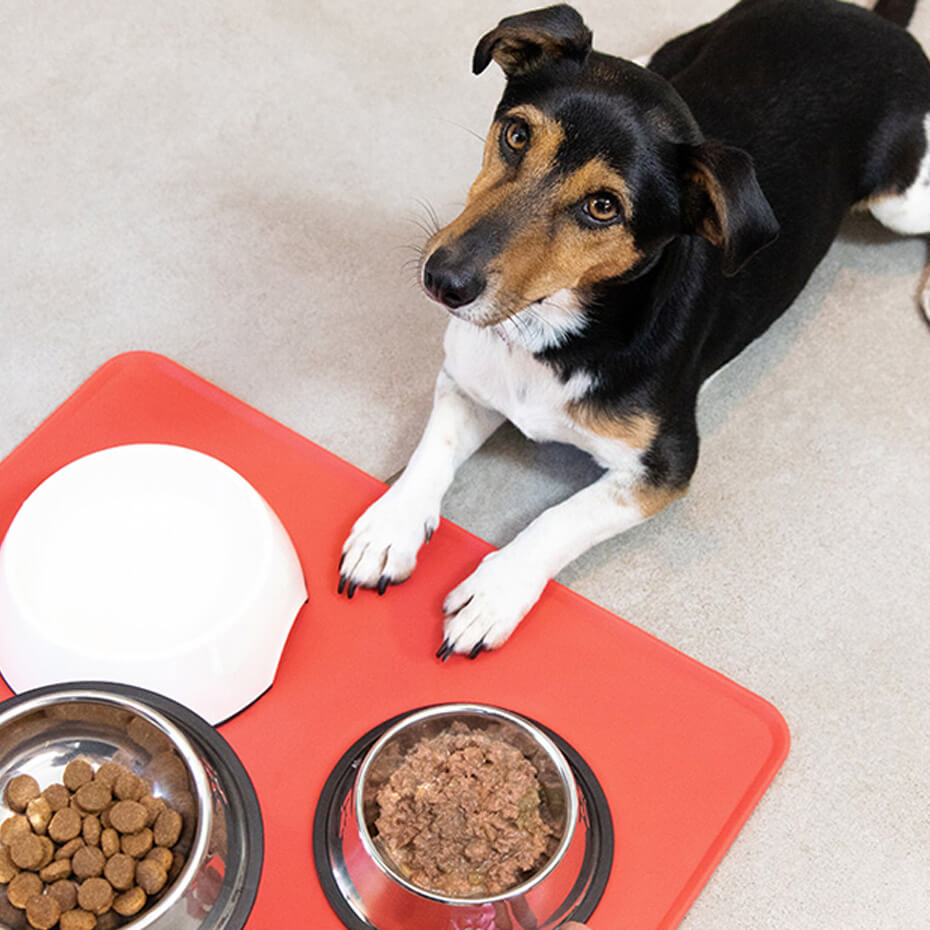
Many people believe that dogs growl due to aggression, however there's so many different reasons why your dog may be growling. Read our guide to find out the different types and what they mean.
Dogs try to communicate with people in different ways, one of which is growling. As pet owners, we often assume that dog growling is a signal of displeasure or aggression, but it isn’t always that simple. There are a range of things that your dog may be trying to convey when they make these growling noises, and if you listen closely, they may not all sound exactly the same.
Read on for more information on the different types of dog growl and what they may be trying to tell you when they do so.
Why do dogs growl?
Dog growling is simply a method of communication – it’s your dog trying to tell you something. Dogs growl to communicate lots of different things, from fear and aggression to encouraging play. That’s why you need to understand the types of dog growl to interpret what the sound means.
Always pay attention to the situation that your dog is in when they growl. You may find that your dog makes different types of growling sounds in different situations, and learning to recognise the circumstance of each dog growl will help you to identify what it is your dog is trying to say. Those sounds may seem similar to us, but it’s all about context! Where one growl may be saying: ‘I feel threatened’, another could be saying: ‘I’m having fun!’
Dog growling when playing
You may have noticed your dog growling during play. It can seem strange when dogs do this – why would they suddenly make a sound of aggression when you’re having fun together? The simple answer is: they aren’t!
This type of dog growling indicates that your pet is having fun; your dog might even be trying to tell you that they want to keep on playing! Although it’s hard for the human ear to pick up on subtle differences in dog growling, play growls can be distinguished from other more aggressive types of growl.
Although every dog is different and has their own vocal range and individual ‘voice’, in general dog play growls will sound higher pitched than other kinds of growling. They will also often be shorter, and may be accompanied by body language like bounding motions, or your dog bending down onto their front legs, raising their rear-end in the air.
Don’t be intimidated if a dog growls during play, with either a person or with another dog. Do keep an eye on the situation in case it escalates, but usually growling during play indicates that a dog is just having fun.
Aggressive dog growling
Aggressive dog growling is all about an expression of power. A dog might be trying to establish their position as the ‘alpha’ over another animal, or they may have spotted something that has triggered their natural hunting instinct. It’s important to not encourage this kind of dog growling, and to try to separate your pet from what is triggering their aggression. Always be cautious and take into account the situation your pet is in when dealing with aggressive dog growling.
It is usually quite clear when a dog is growling out of aggression as opposed to when they’re having fun. This type of dog growling is distinguished by being quite loud, with long, low, rumbles. Your pet’s posture might also change, with raised hackles and lunging movements.
Dog growling as a warning
This deep, rumbling type of growl usually occurs when a dog feels threatened or possessive. Why do dogs growl as a warning? In most cases, it is because you are encroaching on their personal space. This type of growl isn’t intended to be aggressive – it’s a polite warning to show that a dog is feeling uncomfortable.
Don’t ignore warning growls: pay attention to whatever it is that is causing your dog to feel threatened or afraid, and try to remove the cause of the issue. Your dog doesn’t want to escalate the situation, they are simply trying to tell you: ‘please give me space!’
Pleasure growling
Although dogs don’t exactly make audible sounds in the same way that cats purr when they are experience pleasure, you may have noticed your pet make a strange sort of purr-come-growl sound upon occasion.
A pleasure growl sounds very low and rumbling, and may last much longer than other dog growls. It’s relatively clear from the situation your pet is in if they are emitting a pleasure growl: if they are having their belly rubbed or something else they really enjoy! They might be baring their teeth and technically ‘growling’, but this type of dog growling couldn’t be further from the typical interpretation of an aggressive growl. What your dog is saying here is: ‘I love this! Please don’t stop!’
Frustrated dog growling
Have you ever arrived home to a dog desperate to see you, but you’re separated by a fence? In this kind of situation, dogs often start growling. It’s easy to misinterpret this growling as aggressive, because your pet will also be running around anxiously.













